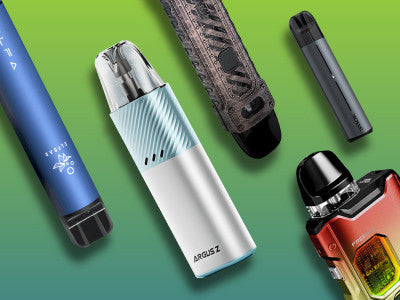
Environmental Impact of Disposable Vapes: What You Need to Know
As vaping continues to gain popularity worldwide, disposable vapes have emerged as a convenient and affordable option for many users. However, their convenience comes with an environmental cost that is often overlooked. Unlike reusable vape devices, disposable vapes are designed for single use, which leads to significant waste. In this blog post, we’ll explore the environmental impact of disposable vapes and what steps can be taken to mitigate these effects.
1. The Rise of Disposable Vapes
Disposable vapes have gained a strong following due to their user-friendly design. With no need to refill e-liquid or change coils, users can simply enjoy the device until it runs out and then discard it. They are especially popular among new vapers or those who prefer an easy, maintenance-free experience. However, the growing demand for these products means that millions of them are being discarded every year.
2. Waste and Non-Biodegradable Components
Most disposable vapes contain a combination of plastics, metals, and electronic components, all of which contribute to e-waste. The internal battery, which is often lithium-ion, is particularly problematic. These batteries are not only non-biodegradable, but they also pose a risk of leaking harmful chemicals into the environment if improperly disposed of.
Unlike standard plastic waste, which can take hundreds of years to decompose, electronic waste (e-waste) like disposable vapes can have a longer-lasting and more damaging effect. When these materials end up in landfills, the chemicals from batteries and other components can leach into the soil and water supply, causing environmental harm.
3. Limited Recycling Options
One of the major issues with disposable vapes is the lack of adequate recycling programs. Although some parts of a disposable vape (like the battery and metal) are technically recyclable, the compact and mixed-material design makes it challenging for traditional recycling centers to process them. The combination of plastic, e-liquid residue, and electronic components means that most disposable vapes end up in landfills.
Additionally, because many users are unaware of the proper disposal methods, they may simply toss disposable vapes in regular trash, contributing to the accumulation of e-waste. As disposable vape sales continue to rise, the lack of comprehensive recycling solutions becomes an increasing problem.
4. The Carbon Footprint of Disposable Vapes
From production to disposal, disposable vapes contribute to a significant carbon footprint. The manufacturing process for these devices involves the extraction and processing of raw materials like plastic, metal, and lithium for batteries. Transporting these products around the world further increases carbon emissions.
The energy used to mine and process materials for lithium-ion batteries alone has a substantial environmental impact. While a single disposable vape may seem insignificant, the cumulative effect of millions of devices being produced and discarded each year contributes heavily to global pollution.
5. What Can Be Done?
The environmental impact of disposable vapes is concerning, but there are steps that both consumers and manufacturers can take to reduce the damage:
-
Education on Proper Disposal: Vape users need to be informed about the correct way to dispose of or recycle their devices. This might involve returning them to specialized recycling centers that handle e-waste or finding retailers who offer take-back programs for used vapes.
-
Encouraging Reusable Vapes: One of the best ways to combat the environmental issues posed by disposables is to encourage the use of reusable vape devices. These systems require regular refilling and replacement parts, but they significantly reduce the amount of waste generated compared to single-use devices.
-
Manufacturers’ Responsibility: Manufacturers should take responsibility for the lifecycle of their products by developing eco-friendly designs. This could involve using recyclable materials, designing vapes that are easier to disassemble for recycling, or even creating take-back programs for used devices.
-
Government Regulations: Some governments are starting to address the issue of e-waste from vaping products. Implementing regulations that require manufacturers to offer recycling options or limit the sale of disposables could help reduce the environmental impact.
6. The Future of Vaping and the Environment
As the vaping industry continues to grow, the environmental impact of disposable vapes is an issue that will require more attention. While disposable vapes offer convenience, they come at a significant cost to the environment. It is crucial for both consumers and manufacturers to adopt more sustainable practices moving forward.
At Puff.ae, we believe in offering not only the latest vaping products but also promoting responsible usage. We encourage our customers to consider reusable options and stay informed about proper disposal methods for their vaping devices.




